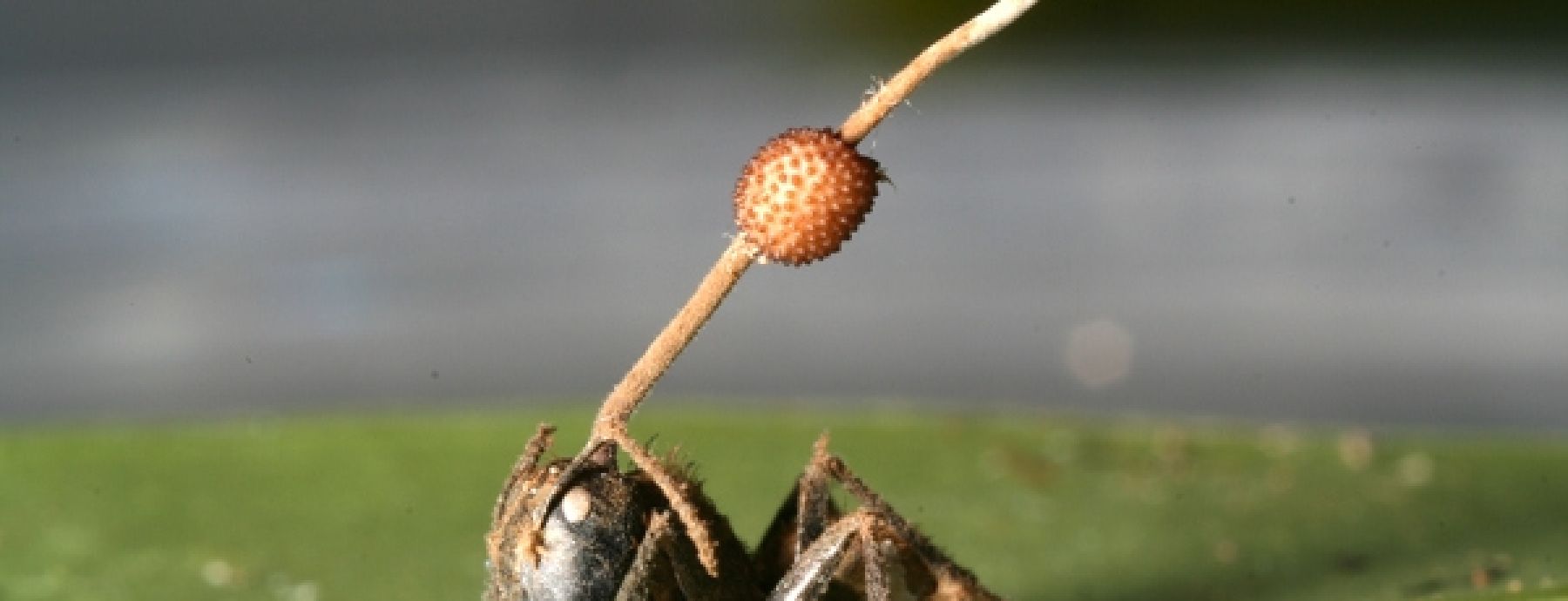Within an ant colony, individual ants have different tasks. Some ants clean the nest, some care for the brood, and others leave the nest to forage. Foragers face the most risk because they might encounter predators and pathogens while searching for food outside of the nest. Especially for the carpenter ant Camponotus rufipes, found in the rainforests of Southeastern Brazil, as the ant nests can be surrounded by infectious fungal spores. If an ant is infected by one of these fungal spores, the ant becomes a ‘zombie ant’ and is controlled by the fungus to leave the nest and die biting the underside of a leaf. How do these ants forage considering this risk?
CIDD researchers Natalie Imirzian, Christoph Kurze, Raquel Loreto, and David Hughes sought to answer this by setting up cameras to capture ant behavior on the main foraging trails. Then, through a collaboration with computer scientists Yizhe Zhang and Danny Chen at the University of Notre Dame, they developed a state-of-the-art deep learning model that tracks ants frame-by-frame in the videos. This provided them with a detailed dataset on ant movement, the first of its kind in a completely natural setting.
The researchers found that foraging ants can be classified into different groups based on the straightness of their walking trajectories. Some ants walk in a curvy fashion, while others walk in nearly straight lines. Moreover, ants varied in the amount they explored out from the main trail. To obtain food ants need to explore, but explorative ants are likely at a higher risk of encountering a fungal spore. Most of the ants showed low levels of exploration, which may protect most of the colony from infection, but the number of explorative ants may maintain the infection at a chronic level from the perspective of the colony. The system thus shows a tradeoff between disease resistance and food acquisition, as well as demonstrates how individual variation in behavior may impact disease transmission.
Synopsis by Natalie Imirzian

Figure: Subset of Figure 1 from main text. Trail image, trajectory overlay, and collective movement pattern. (a) Example trail image from GoPro footage of colony MP1. Individual ants are labeled with identification numbers. (b) All of the trajectories from a single night of footage (January 14) at colony MP1. Each line across the trail represents a different ant, with the different colors distinguishing between different ant tracks.
Written By: N. Imirzian, Y. Zhang, C. Kurze, R. G. Loreto, D. Z. Chen, and D. P. Hughes
Paper Url: https://www.nature.com/articles/s41598-019-49655-3
Journal: Scientific Reports
Journal Reference: Scientific Reports volume 9, Article number: 13246 (2019)
Paper Id: https://doi.org/10.1038/s41598-019-49655-3
